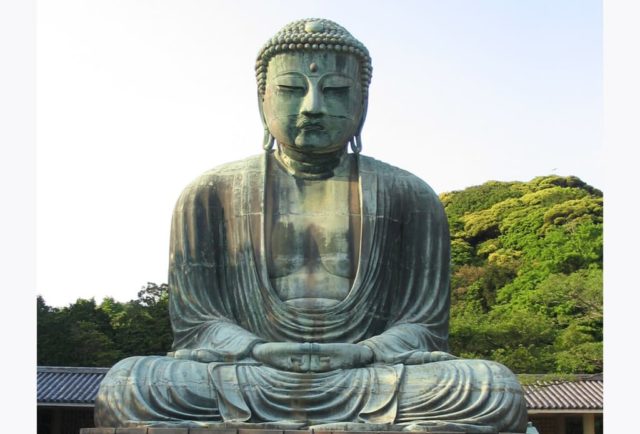
Buddha Daibutsu, Kamakura
Mahayana Buddhism
Known as the ‘Great Vehicle’ of Buddhism. Mahayana Buddhism generally spread north through India to China, Japan.
Mahayana Buddhism stresses:
- Buddhism is for the masses not just monks
- The role of the Bodhisattva – altruistic beings working for the improvement of the world. – Everyone has the capacity to be a Bodhisattva
- Non-Dualism – Ultimate reality beyond all divisions
- Living in the present moment
Theravada Buddhism
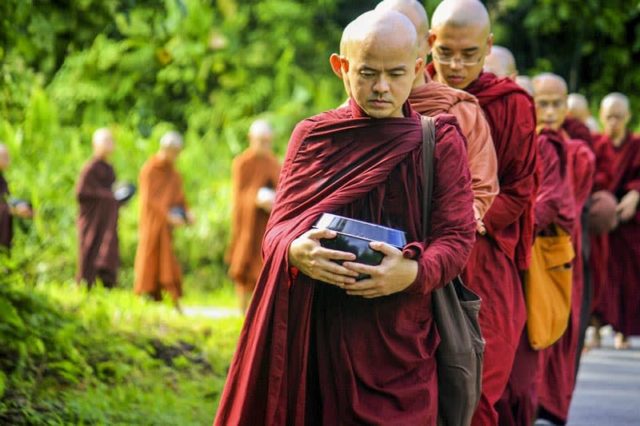
- (“The School of the Elders”)
- Generally spread south to Sri Lanka, Thailand, Laos and Cambodia.
- Often referred to as ‘original Buddhism’ Closest to oldest recording teachings (Pali Canon) of the Buddha.
- A close relationship between lay followers and monastic communities. Theravada Buddhism is a big part of daily life in countries like Thailand
Vipassana (Insight Meditation)
Popular in West, related to Theravada Buddhism. Emphasises – control of breath and retreats
Pure Land Buddhism
A more devotional form of Buddhism. Less emphasis on meditation more on belief and devotion to Amitabha – a transcendental being who exists beyond limits of time and space in your own heart. – Pure Land Buddhism stresses practise rather than study.
Zen Buddhism
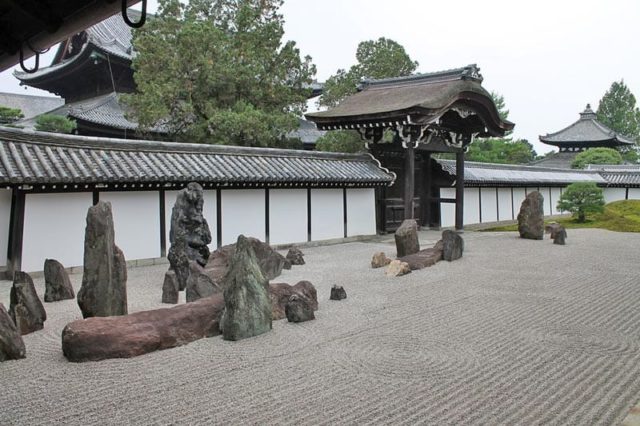
- Based on simple, pure insight.
- Developed in China and Japan.
- Often taught through ‘Zen Masters’ adepts of meditation, known for their quirky traditions
- Little formal ritual. Emphasises Zazen (sitting meditation)
Vajrayana – Tibetan Buddhism
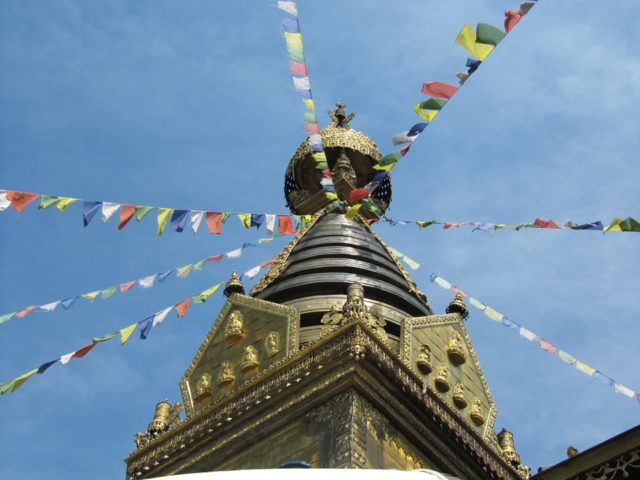
- Developed out of Indian Mahayana. Most popular division of Vajrayana Buddhism is Tibetan Buddhism.
- Includes hidden esoteric (Tantric) teachings not revealed during the Buddha’s life
- A more colourful form of Buddhism, music, chanting, mantras, mudras, mystic diagrams. Deity Yoga e.g. Goddess Tara
- Tibetan Buddhism became deeply entrenched in Tibetan society, linked to the Feudal system. Though 14th Dalai Lama has sought to more Tibetan Buddhism more towards democracy.
Hinayana Buddhism
Often used as a definition opposite to Mahayana Buddhism. Sometimes used in a pejorative way. Means small vehicle – as opposed to the large vehicle. Some suggest this is actually closer to original teachings of the Buddha.
Modern Buddhist Movements
Shambhala Buddhism
- Essentially derived from Tibetan Buddhism, emphasising Mindfulness. Also includes aspects of Zen Buddhism, especially in aesthetics.
- Introduced by Sakyong Mipham Rinpoche
New Kadampa Tradition
Mahayana Buddhist school founded by Venerable Geshe Kelsang Gyatso
Friends of the Western Buddhist Order
A modern, universal Buddhist division. Is said to be ecumenical not being affiliated with any particular tradition.
Citation: Pettinger, Tejvan. “Types of Buddhism”, Oxford, UK. www.biographyonline.net Published 3 Feb 2016.
The Heart of the Buddha’s Teaching
- The Heart of the Buddha’s Teaching: Transforming Suffering into Peace, Joy, and Liberation by Thich Nhat Hanh at Amazon
Buddhism
Buddhism – a short introduction
Related pages

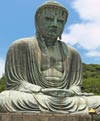
Lord Buddha – Biography of Lord Buddha


